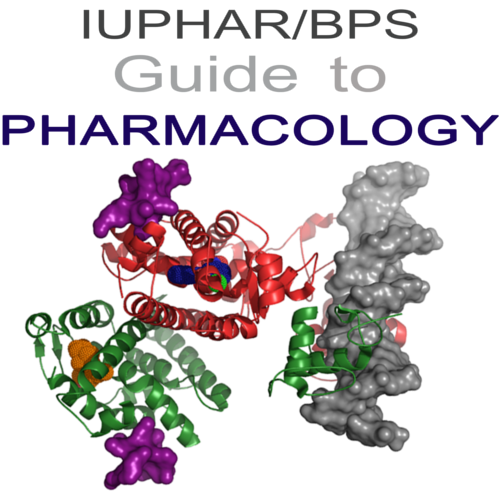Succinate receptor in GtoPdb v.2023.1
Abstract
Nomenclature as recommended by NC-IUPHAR [8]. The succinate receptor (GPR91, SUCNR1) is activated by the tricarboxylic acid (or Krebs) cycle intermediate succinate and other dicarboxylic acids with less clear physiological relevance such as maleate [17]. Since its pairing with its endogenous ligand in 2004, intense research has focused on the receptor-ligand pair role in various (patho)physiological processes such as regulation of renin production [17, 39], ischemia injury [17], fibrosis [25], retinal angiogenesis [34], inflammation [25, 23], immune response [32], obesity [44, 26, 21], diabetes [42, 22, 39], platelet aggregation [38, 36] or cancer [28, 46]. The succinate receptor is coupled to Gi/o [11, 17] and Gq/11 protein families [31, 17, 40]. Although the receptor is, upon ligand addition, rapidly desensitized [19, 31], and in some cells internalized [17], it seems to recruit arrestins weakly [10]. The cellular activation of the succinate receptor triggers various signalling pathways such as decrease of cAMP levels, [Ca2+]i mobilization and activation of kinases (ERK, c-Jun, Akt, Src, p38, PI3Kβ, etc.) [12]. The receptor is broadly expressed but is notably abundant in immune cells (M2 macrophages [40, 21], monocytes [32], immature dendritic cells [32], adipocytes [44], platelets [38, 36], etc.) and in the kidney [17].
Published
26-Apr-2023
How to Cite
Davenport, A. P., Hanson, J. and Liew, W. C. (2023) “Succinate receptor in GtoPdb v.2023.1”, IUPHAR/BPS Guide to Pharmacology CITE, 2023(1). doi: 10.2218/gtopdb/F446/2023.1.
Issue
Section
Summaries

This work is licensed under a Creative Commons Attribution-ShareAlike 4.0 International License.










